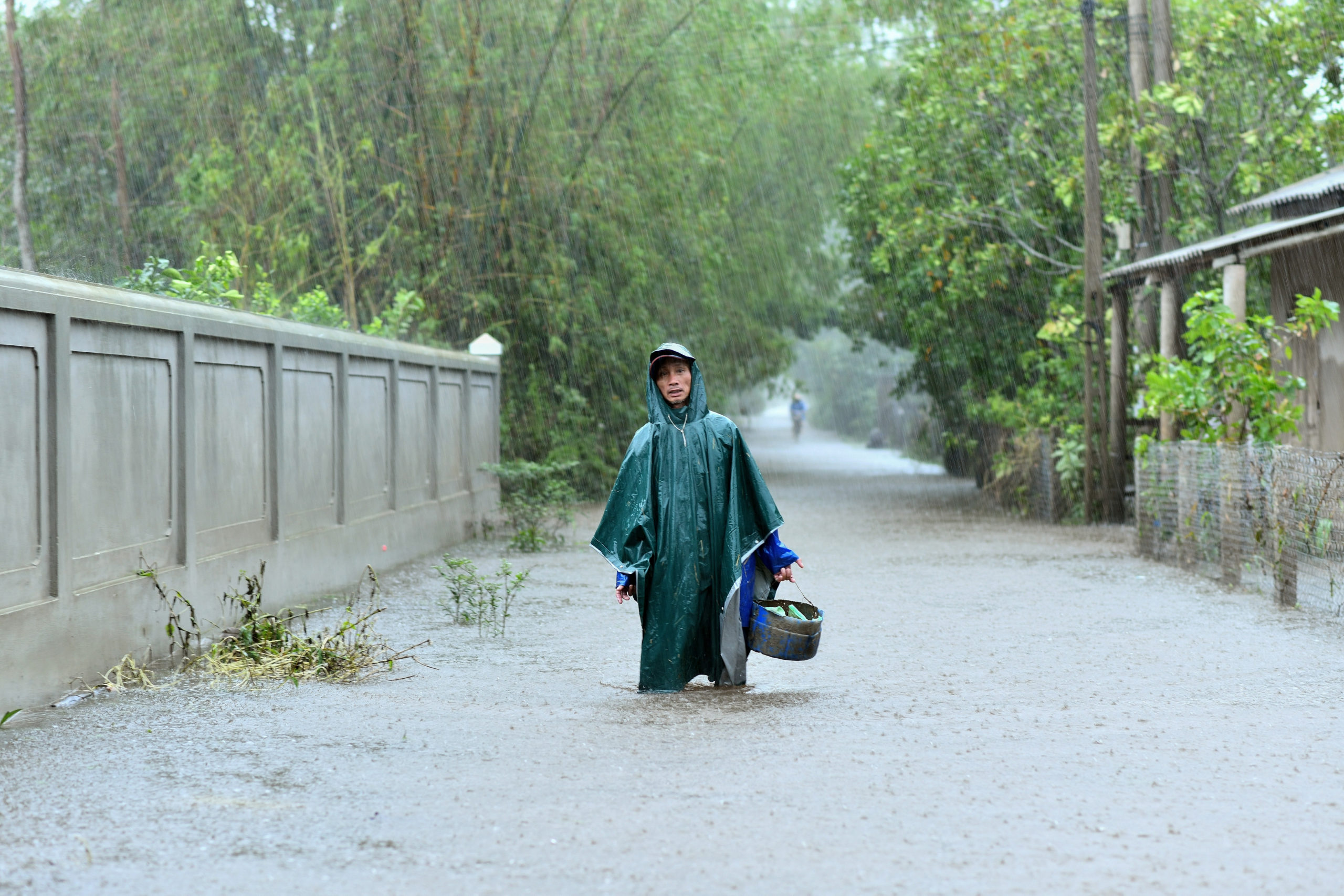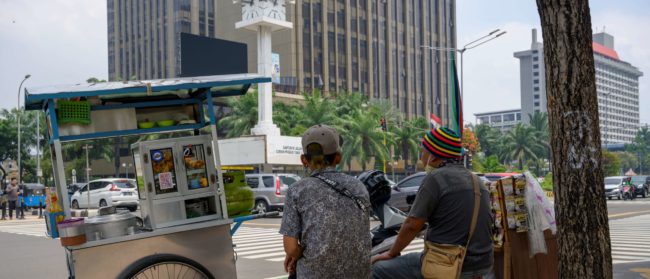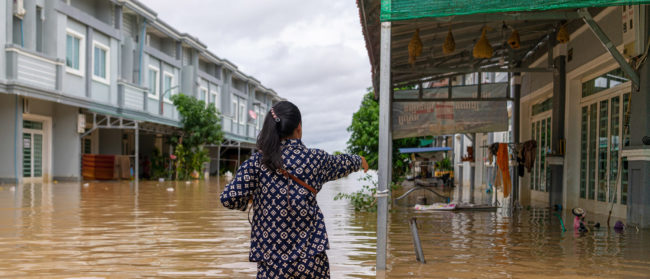Arturas Balynas was driving through Quan Nam last week when he witnessed entire villages plunged into darkness, with power cables and trees lying in the road.
An English teacher in Bien Hoa, Balynas was volunteering to help communities in Vietnam’s central region, hitting the main stops where October’s cyclones and floods have been tearing roofs off some houses, and completely washing others away.
“We went to see one house where there was an old woman. She was 85 years old and living on her own and she had a section of roof missing,” said Balynas. “It was all destroyed, outside of the house. What if it’s raining? The rain goes inside the house, and she’s got nowhere else to go.”
There’s a saying in Vietnam that goes, “the forests are made of gold, the sea is made of silver”. It means, essentially, that there is an endless bounty of wealth in nature, ripe for the picking.
But after a year of flooding and landslides closely linked to deforestation and hydroelectric power plants, and which have left 235 people either dead or missing in October alone, that idiom no longer resonates for many.
Deforestation has long been known to be a major contributing factor exacerbating the severity of these natural disasters in central Vietnam. As long as two decades ago, the United Nations labelled the destruction of forest habitats as “one of the principal causes of the most severe floods to hit the Mekong delta” when storms of equal impact hit the region in 2000.
Around 70% of the Vietnamese population lives along the country’s 1,800 mile-long coastline facing the East Sea. Every year floods, cyclones and landslides hit the shores. This, along with a multitude of other factors, makes Vietnam one of the most vulnerable nations globally to experiencing the effects of climate change, according to a 2018 International Panel on Climate Change report.
But while the problem of flooding is far from new, the effects of Vietnam’s changing landscape have become more evident this year. Nguyen Hai Anh is secretary general of the Vietnam Red Cross – he said that people he has spoken with told him they have never before experienced the level of flooding seen in recent weeks.
“I’ve spoken with many old people living in the provinces of central Vietnam who said they’ve never seen that kind of flooding in their lives,” he told the Globe. “It’s very, very dangerous and damaging.”
Nguyen had just returned from a five-day trip to the worst-hit areas in central Vietnam, leading the response team in central provinces Quang Binh, Binh Dinh, Phu Yen and Nhe An.
“It was a long trip,” he said, his voice lined with exasperation.
This year, relentless cyclones in central Vietnam have seen some of the worst floods in decades, with water levels in Vietnam’s central province of Quang Binh eclipsing the previous 1979 record by nearly a metre. At the time of writing, more than 200,000 houses have been damaged or completely destroyed.
Far from mere bad luck, evidence points to the largely unchecked development of new hydropower plants, and the inevitable deforestation that accompanies each project, as among the single-largest contributing factors worsening flooding and landslides.
In 2017, Vu The Long, former head of the Human and Nature Research Group of the Viet Nam Institute of Archaeology, said in an unusually candid comment that floods in Vietnam have become increasingly severe due to a destruction of the environment.
“People have been cruelly destroying the environment, worsening the floods,” he told Mekong Eye in 2017.
Trees prevent sediment runoff, with roots absorbing water from the soil, allowing the dryer soil to absorb yet more water. Forests also hold onto soil that might otherwise move and cause landslides, while also reducing the movement of sediment that can fill river channels, causing them to overflow.
According to one study, by 2020 Vietnam has lost roughly 133,930 hectares of forest land to the development of hydropower resources, up from some 20,000 hectares in 2013. Hydropower projects result in tree felling and deforestation on a large scale, with some hydropower projects even acting as fronts for logging, according to local reports. Even Vietnamese officials, generally tight-lipped on environmental matters, appear somewhat free to discuss the issue with local media.
In an interview with Vietnam.net in 2019, following a year of devastating natural disasters that took 218 lives, Tran Quang Hoai, General Department of Natural Disaster Prevention and Control said: “We now have to pay a heavy price for deforestation. It will take tens of years to replace the forests.”
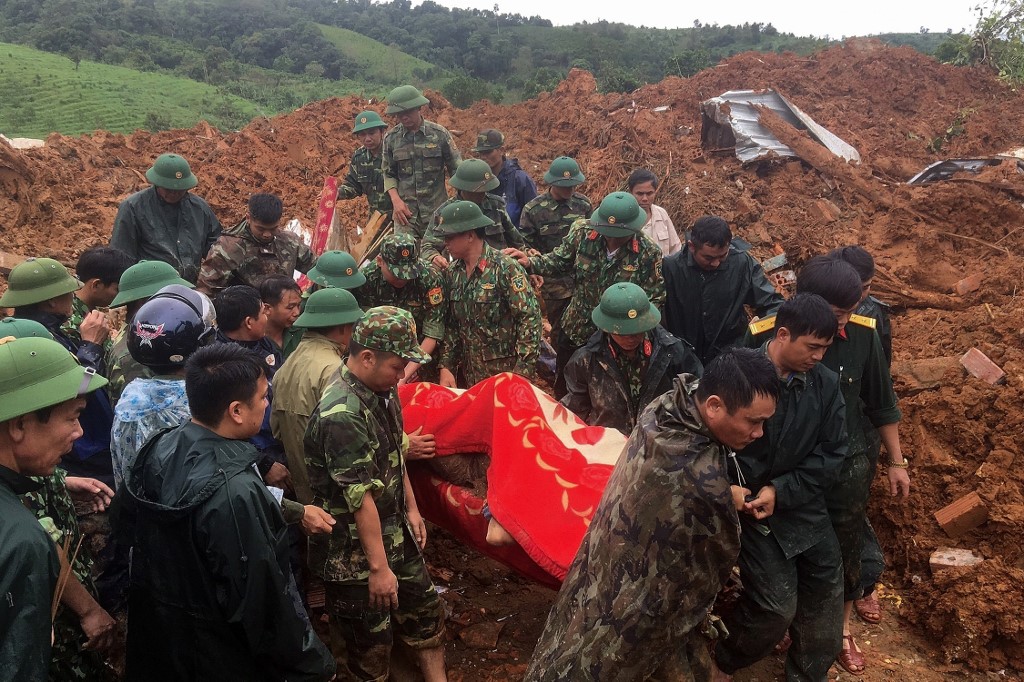
However, that same year in Quang Tri province – where, incidentally, a landslide also killed 22 soldiers this year – seven more hydropower projects were built. There are now hundreds of hydroelectric power plants in the central provinces, with new ones built all the time. Such is the unregulated nature and scale of the development, it is often reported that the exact number of hydropower projects in Vietnam is unknown. However, Đỗ Đức Quân, Vice Director-General of the Electricity and Renewable Energy Authority, estimated that the number was over 600.
Vietnam is a growing economy, and as such, it has a growing thirst for energy. Over the last 20 years, the government had aimed to fulfill that thirst with a thriving hydropower industry. And it worked. Vietnamese-generated hydropower now makes up over 40% of the country’s energy, and there’s hope that this will eventually grow to around two-thirds.
But it comes at a heavy cost. Over the last 20 years, hydropower projects of a range of sizes and capacities have been planned and constructed, with major clusters in Quang Binh and Phu Yen – the areas the Red Cross’ Nguyen just returned from.
Tran Quoc Thanh, director of the Department of Science and Technology of Nghe An, told state-run media Giao Thong last month that small hydropower projects are constantly rushed through the system because they have fast capital recovery and offer large profits.
“People [claim they] build hydropower for the purpose of regulating floods, but it’s not true. They benefit mainly from the trees that have been cut down, and then maybe from electric power and many other resources. In general, when they deforest, they also take away the effective shield of nature to regulate the water flow,” Thanh said.
In the future, we will be very cautious when building small hydropower plants
These projects stopped, briefly, in 2012 when the National Assembly asked relevant ministries to weed out 400 small hydropower projects from the list of power projects to be developed. However, observers said hydropower projects increased again after “a short period of interruption”.
Given the lack of information surrounding hydropower projects and deforestation, the future appears almost impossible to predict. What is clear, however, is that Vietnam is aware of its rising problems – they are, after all, too big to ignore.
There is also hope the ongoing floods have raised awareness for the devastating impact of hydropower projects. One south central province, Khanh Hoa, has already cut four of them out following environmental concerns related to the floods.
Talking to the local press late last month, the Minister of Natural Resources and the Environment, Trần Hồng Hà, also claimed: “Ministries and agencies have proposed cutting more than 400 small hydropower reservoirs. In the future, we will be very cautious when building small hydropower plants.”
Vietnam was once labelled the second-worst country for deforestation, behind only Nigeria, in 2005 by the Food and Agriculture Organisation. But, thanks to government-led forest policies and initiatives, the organisation now sees Vietnam as moving in a positive direction, with forest cover significantly increasing.
But experts question whether this is the right kind of forest cover, and while there has been a significant increase in trees in Vietnam, the quality of the forest has been reducing, especially in the central highlands.
A large source of this issue boils down to monocrops, mostly acacia plantations, which Xuan Phuc To, a research fellow at Australian National University, told the Globe “directly contributed to the landslides and floods”.
The issue dates back to the 1960s, where until the 1990s the government saw forests as an important source of income, cutting down a substantial amount of national forests for timber. Of course, large swathes of forests were destroyed during the American War, however, state-owned enterprises were one of the biggest problems, Phuc said.
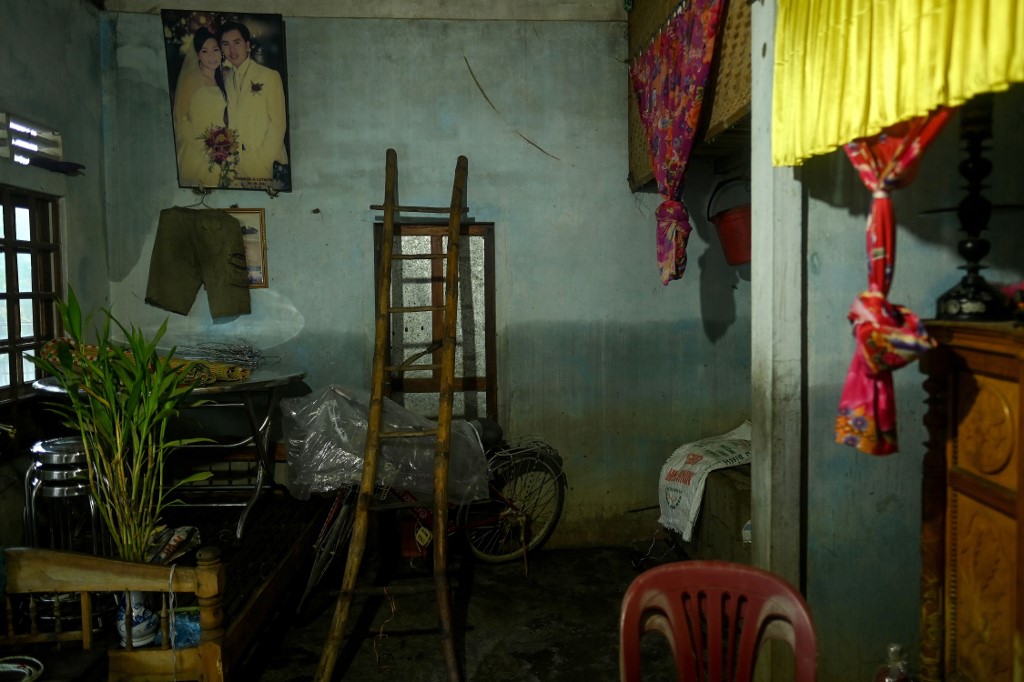
“By the second half of the 1990s they stopped timber logging, but by that point the forests were devastated,” he said.
The government decided to create an initiative called the ‘Evolution Programme’, where impoverished households were given a certain amount of land, a large portion of which was barren, and encouraged to grow trees.
“Each of them gets around one or two hectares of land. But they’re very poor, so they can’t go for long-cycle trees, so they have to go for short-cycle trees,” he said. “With the expanse of the timber industry in Vietnam – which is basically a demand for acacia – you have a rapid expansion of plantations in Vietnam contributing directly to the increase of forest cover, but mainly acacia monocrops,” said Phuc.
Acacia, a rapidly growing tree harvested for its wood every three years or so, “is not as useful as natural forest” in flood mitigation and prevention, said Phuc.
Phuc continued that, while small holders get a bad rap for planting monocrops, there was little else they could do. Instead, Phuc suggests government policies to engage with local communities surrounding forests to help protect them, and rewarding them sufficiently for their protection. “It is happening,” Phuc said. “But it could improve.”
This year’s floods are different, and even with tricks like houses on stilts or buoyant floats, the flood damage was too devastating to escape, with even the most resilient communities finding it difficult
Vietnam’s Red Cross responds to floods in the central provinces every year, providing water, food, warm clothes, cooking utensils, medicine and water purification tablets. They’ve been doing it this year too, but on a much larger scale, providing 10 tonnes of relief items like instant noodles, drinking water and life jackets, along with cash, 480,000 water purification tablets and 2,390 ‘household kits’.
Communities in the area are resilient. They’ve been experiencing these floods for decades and see extreme weather as inevitable. The likes of the Red Cross and UNDP are now helping residents build houses designed to counteract natural disasters, with structures raised on stilts and buoyant bases that can rise when the floods come.
Though the government is always quick to respond with an injection of cash, their money usually goes to reconstructing infrastructure, like highways, dams and dykes. Experts say that, when financial aid is offered to affected families, it is rarely enough to rebuild their homes, making homes from organisations like the Vietnam Red Cross and UNDP essential for a more resilient community.
However, there are only so many houses that can be built by organisations, and many central province citizens are still stuck endlessly fixing, renovating, and rebuilding their homes after floods. Studies show that 70% of recently built low income houses in Vietnam are weak and prone to damage, and with a lack of government aid, residents are forced to use their own money to rebuild houses.
This leaves them trapped in a cycle of poverty, where already poor households are forced to spend their money fixing roofs or rebuilding walls, never saving enough money to build a flood-proof house. In the long run, with a lack of professional instruction and technical guidance, they ultimately fall prey to the same flooding issues each year.
But this year’s floods are different, and even with tricks like houses built on stilts or buoyant floats, the flood damage was too devastating to escape, with even the most resilient communities finding it difficult to fight against disaster.
Nguyen explains Vietnam’s Red Cross is working with the government to try other measures, such as replanting trees on hills in mountain areas to prevent landslides and bank erosion, and mangroves along the coast to reduce the risk of storm surges and coastal flooding. He says too, that the government is listening, and wants to achieve measures they agreed to in the Paris Environment Treaty. “That’s [policies to create a more diverse forest cover] a very positive measure taken by the government,” he said.
In the immediate future, the focus is on the impact October’s floods have had on the 1.5 million Vietnamese people.
Having returned from the areas that have seen the greatest damage, Nguyen explains that he has seen the consequences of the damage first hand, he indicates with a flat palm, pointed to the ground and held just below his collar bone, explaining the depth of the water that he had to wade through.
“We would like to ask all of the governments, all of the people, all of the companies all over the world to join hands together,” said Nguyen. “So that we can care for our diversity and care for our climate and nature, so nature can bring happiness to us, not damage.”
